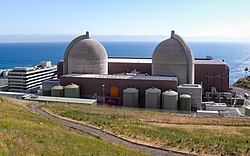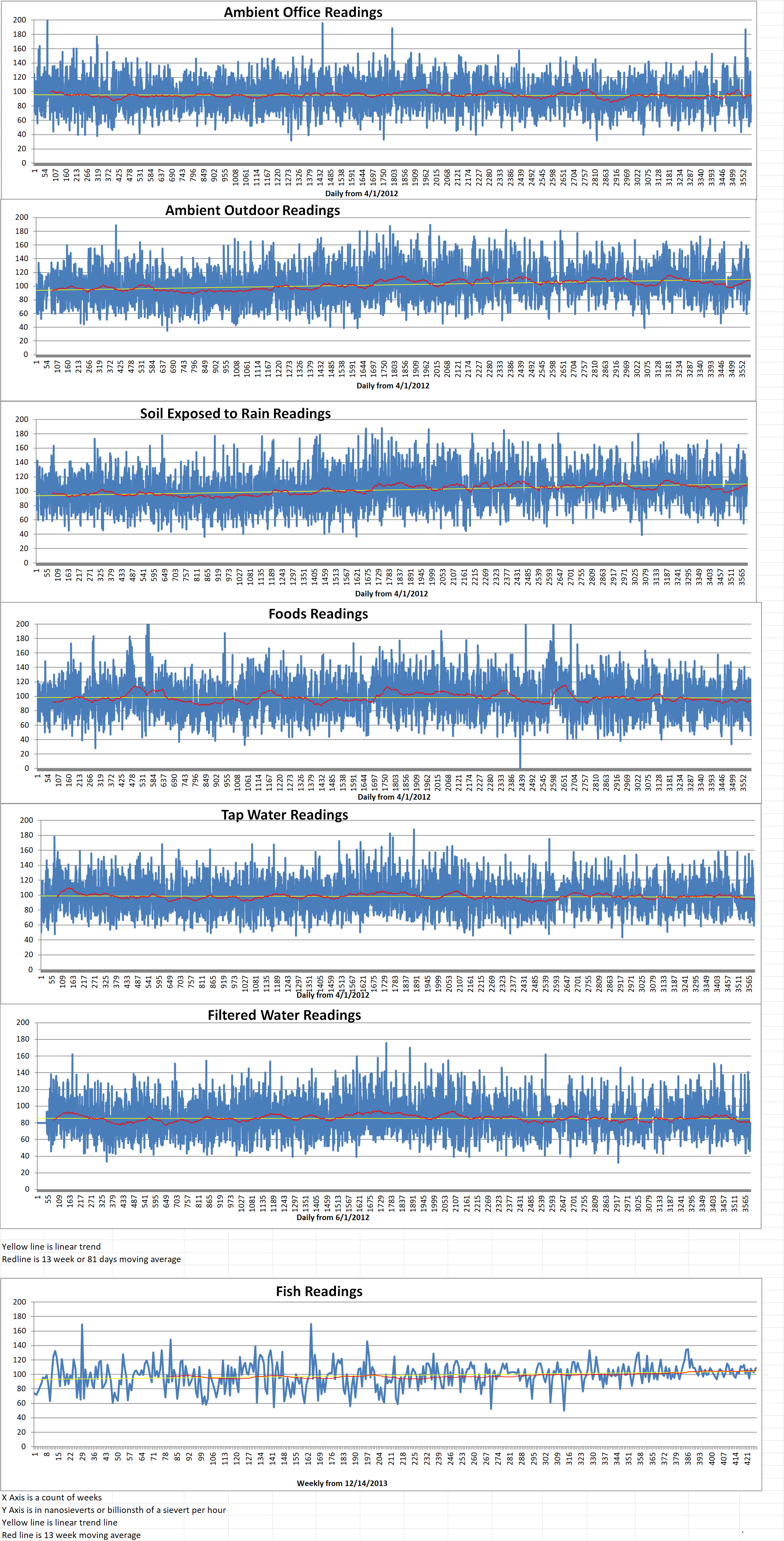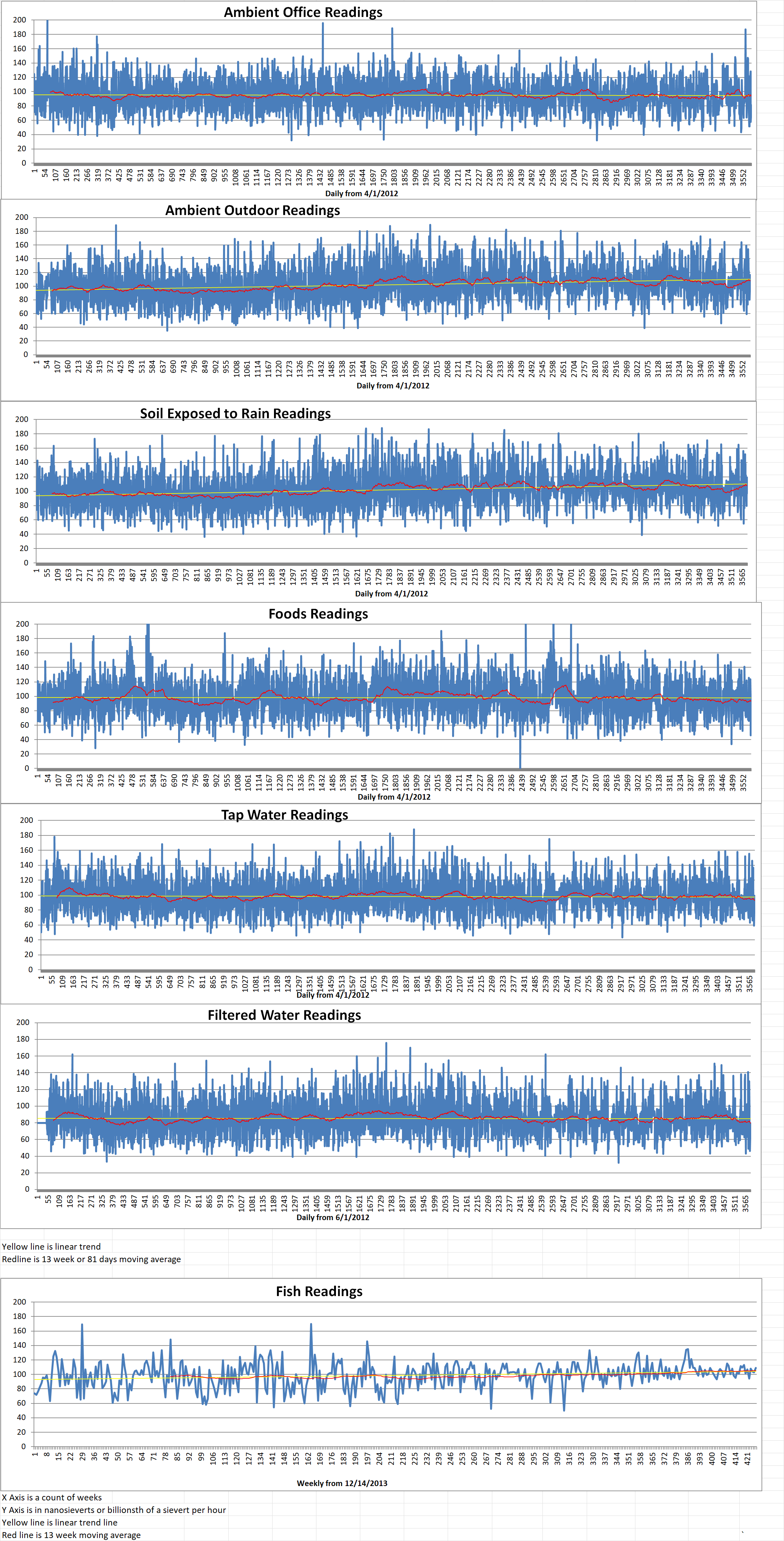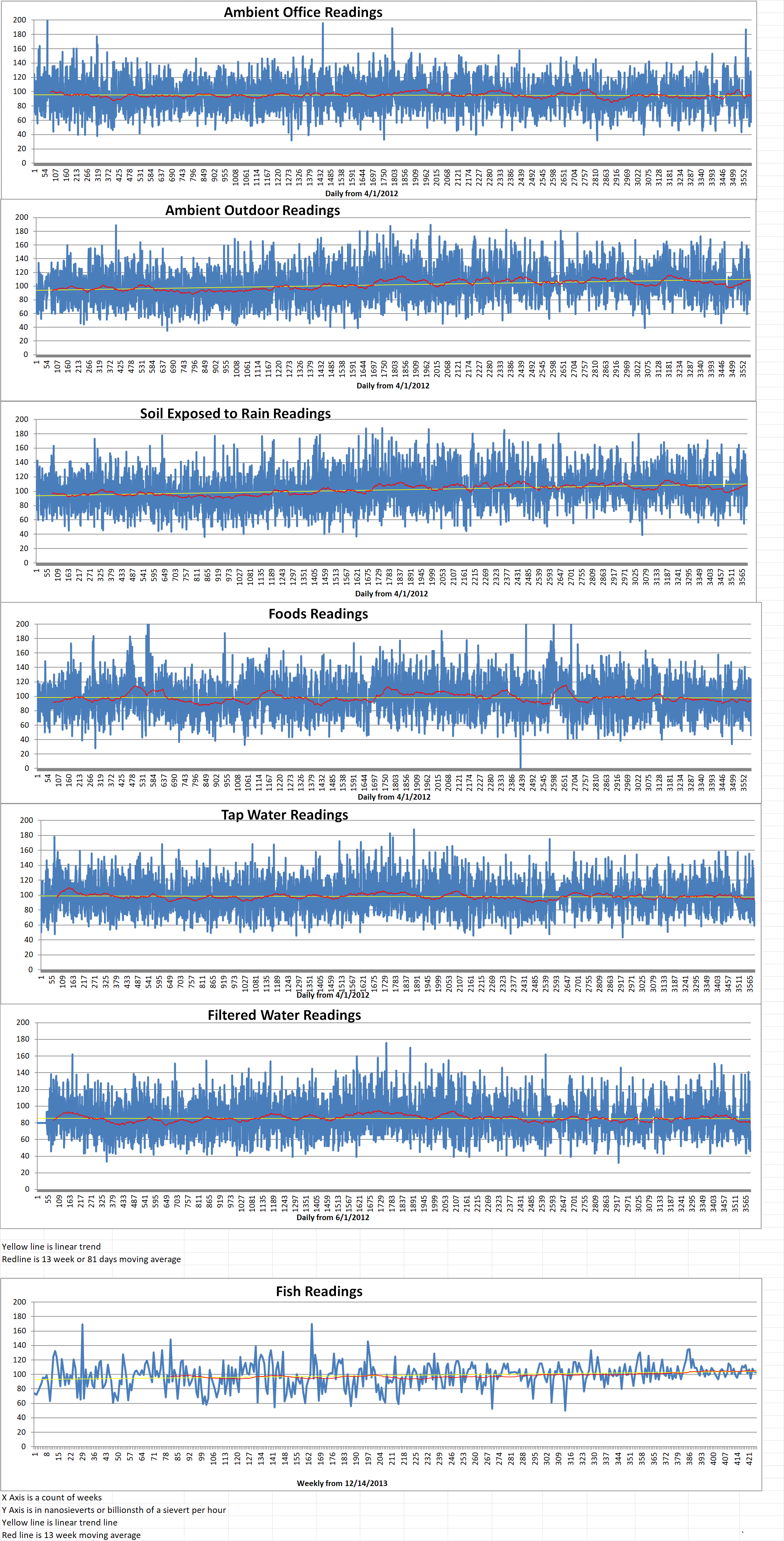The U.S Inspector General (IG) issued a report this week with respect to the way that the Nuclear Regulatory Commission (NRC) handled the failure of an auxiliary feedwater system that required one of the nuclear reactors at the Diablo Canyon Nuclear Power Plant near San Luis Obispo on the coast of California to be shut down for eight days. The report stated that the IG found that the NRC had not properly inspected the feedwater system prior the shutdown.
Dan Dorman is the NRC Executive Director for Operations. He said, “After reviewing the Inspector General’s event inquiry, our technical staff determined that the Reactor Oversight Program and its associated inspection program continue to provide reasonable assurance of adequate protection of public health and safety. Resident inspectors are vital to the NRC safety mission. I have full confidence in the qualification, abilities, and professionalism of the inspectors involved in this event inquiry as well as all of our inspectors.”
The response of the NRC to the IG report highlights multiple “factual errors and takes issue with several portions” in the IG report according to the NRC Office of Public Affairs. The NRC states that the leak in the auxiliary feedwater system did not cause the nuclear plant to shut down or compromise the plant’s safety as claimed by the NRC. The NRC also said that the staff at Diablo Canyon found no evidence that auxiliary feedwater system pipe corrosion hidden under the metal jacketed insulation should have been located by NRC inspectors before the leak occurred.
The NRC response states that “The resident inspectors then assigned to Diablo Canyon followed appropriate guidance during their inspection of the system and regional and headquarters management appropriately determined that the leak had very low safety significance. Corrosion under insulation, which caused this leak, is known to the industry and the NRC.”
A spokesperson for Pacific Gas & Electric (PG&E) who operates Diablo Canyon claims that it identified the issue while the Unit 2 reactor was shut down for maintenance in 2020. Jim Jennings is a PG&E spokesman. He said, “PG&E made the repairs and conducted thorough inspections before the unit was returned to service. Additionally, we performed similar inspections on Unit 1 and identified no further conditions requiring repair. Safety is and always will be our most important responsibility at PG&E and Diablo Canyon, and the plant has an excellent safe operating record.”
The NRC said that it is confident in the effectiveness of its inspection programs. This is one of the many ways that it verifies nuclear power plant safety. It went on to say that other methods include the Reactor Oversight Program performance indicators, robust design margins for every plant, and operator and training requirements to enable plant operators to respond to equipment malfunctions, among other methods.
Salud Carbajal is a Central Coast Congressman for California. He is reviewing the NRC response and a spokesperson for Carbajal said that the congressman intends to have further conversation with the NRC to learn more about the differences in conclusions between the two agencies. The spokesperson said, “The congressman believes it is of the utmost importance to understand why there are conflicting conclusions in these documents and what can be done to communicate those reasons clearly to Central Coast communities.”
Blog
-

Nuclear Reactors 1020 – Inspector General Criticizes The Nuclear Regulatory Commission Inspections At Diablo Canyon Nuclear Power Plant
-

Geiger Readings for May 02, 2022
Ambient office = 93 nanosieverts per hour
Ambient outside = 105 nanosieverts per hour
Soil exposed to rain water = 101 nanosieverts per hour
Tomato from Central Market = 100 nanosieverts per hour
Tap water = 80 nanosieverts per hour
Filter water = 55 nanosieverts per hour
-
Nuclear News Roundup May 01, 2022
France and India aim to progress EPR project in coming months world-nuclear-news.org
$61 Million in Refunds for Customers in SC Nuclear Debacle usnews.com
58.4 Billion Nuclear Power Plant and Equipment Markets by Reactor Type and Equipment Type businesswire.com
North Korea fires ballistic missile amid growing nuclear threat upi.com
-

Geiger Readings for May 01, 2022
Ambient office = 73 nanosieverts per hour
Ambient outside 117 nanosieverts per hour
Soil exposed to rain water = 118 nanosieverts per hour
Red leaf lettuce from Central Market = 59 nanosieverts per hour
Tap water = 82 nanosieverts per hour
Filter water = 73 nanosieverts per hour
-
Nuclear News Roundup Apr 30, 2022
The Guardian view on Putin’s nuclear threats: Russia is losing in Ukraine theguardian.com
Namibian community benefits from Rössing reservoirs world-nuclear-news.org
Will Putin use nuclear warfare on Ukraine? Our military expert weighs in firstcoastnews.com
IAEA publishes first report on Fukushima water discharge plan world-nuclear-news.org
-

Geiger Readings for Apr 30, 2022
Ambient office = 74 nanosieverts per hour
Ambient outside = 98 nanosieverts per hour
Soil exposed to rain water = 97 nanosieverts per hour
Red bell pepper from Central Market = 87 nanosieverts per hour
Tap water = 99 nanosieverts per hour
Filter water =68 nanosieverts per hour
Dover sole = 109 nanosieverts per hour
-

Radioactive Waste 854 – Problem Of Spent Nuclear Fuel Disposal – Part 3 of 3 Part
Part 3 of 3 Parts (Please read Part 2 first)
In 2021, China began construction of an underground laboratory in Gansu province that scientists will utilize to study whether the site is suitable for the geological disposal of spent nuclear fuel. The laboratory will be located eighteen hundred feet underground below the Gobi Desert in granite bedrock. If the site is found to be acceptable after testing, the complex could be built in the 2040s and begin operating around 2050.
Russia is also considering the construction of an underground research laboratory for similar purposes at a site that it has deemed suitable for geological disposal near the Siberian city of Krasnoyarsk, in the middle of the country.
Considering the time and cost required for construction and the extreme complexity of geological disposal, some countries are pursuing medium-term solutions known as consolidated interim storage.
These big interim waste storage facilities are being designed to operate for many decades until geological disposal becomes more widely available. Such sites will also consolidate storage to alleviate the risks associated with high-level waste being spread across multiple sites. Interim sites would have advanced capabilities and technologies that will allow for safely storing canisters of spent nuclear fuel. They would also be sited in areas considered to be at a much lower risk than the reactors sites where the spent nuclear fuel is usually stored. The new facilities would be away from coastlines and in geologically inactive, remote locations.
The U.S. is home to a huge volume of spent nuclear fuel. It amounted to eighty-six thousand tons as of last year. Most of it is currently in storage at nuclear power plants. Two private interim storage projects for spent nuclear fuel are being considered in the U.S. They are Holtec’s HI-STORE facility in New Mexico and Interim Storage Partners’ project in Texas. However, the continuing lack of progress in the U.S. on a final disposal solution could preclude social acceptance of interim sites.
Matt Bowen works at the Columbia University Center on Global Energy Policy. He said, “States will likely be more hesitant to accept a consolidated interim facility on their land, worrying that ‘interim’ will become long term if there is no final disposal site.”
A critical emerging issue is the higher levels of radioactive materials in contemporary fuels and whether they pose a greater risk than legacy fuel.
The average amount of thermal energy generated per unit of nuclear fuel has increased from the early days of nuclear reactor operation. This results in a higher “burnup” of spent nuclear fuel. Higher burnup reduces fuel costs for the industry. However, it results in waste that is more radioactive and releases more heat as it decays than lower burnup fuels. This was reported in a July 2021 report to U.S. Congress by the US Nuclear Waste Technical Review Board.
The panel’s report said, “Extensive research on low burnup fuel has provided confidence that it can be stored for extended periods and transported.” The panel stressed that this is not the case with high burnup fuels.
Changes to the chemical and physical characteristics of the nuclear fuel and its fuel rod assemblies at higher burnup levels are not well understood, according to the report. These different characteristics might increase corrosion and embrittlement of the cladding on the storage canisters, increase pressure buildup inside the canister, and create other changes that could be particularly concerning during storage, transportation, and disposal.
Another outstanding question is the potential risks posed by the possible need for repackaging spent nuclear fuel that has sat in canisters for decades for transportation or insertion into a geological disposal site.
The momentum towards a new era of nuclear power is predicated in part on government and nuclear industry claims that new technological solutions to the permanent disposal of spent nuclear fuel will be here soon. However, big challenges remain in their realization at the necessary scale. It is impossible to minimize the real and persistent challenges of existing and future spent nuclear fuel management. This will ultimately shape the outlook moving forward. -

Geiger Readings for Apr 29, 2022
Ambient office = 81 nanosieverts per hour
Ambient outside = 116 nanosieverts per hour
Soil exposed to rain water = 119 nanosieverts per hour
English cucumbers from Central Market = 80 nanosieverts per hour
Tap water = 80 nanosieverts per hour
Filter water = 8 nanosieverts per hour
-
Nuclear News Roundup Apr 29, 2022
Letters to the Editor: How desperate is California for Diablo Canyon’s nuclear power? News.yahoo.com
California Governor Newsom offers hope for state’s last nuclear plant, but major hurdles remain cnbc.com
Digital twin is being created for Russia’s BREST-300 reactor neimagazine.com
Zaporozhye NPP operating normally according to AFP neimagazine.com
-

Radioactive Waste 853 – Problem Of Spent Nuclear Fuel Disposal – Part 2 of 3 Part
Part 2 of 3 Parts (Please read Part 1 first)
Finland is the first country to have a deep geological repository, referred to as ONKALO, under construction. It is due to start storing spent nuclear fuel in 2025. Trial runs will begin in 2023 according to Posiva, the company charged by the Finnish government with handling final nuclear waste disposal.
ONKALO is located near the Olkiluto nuclear power plant on Finland’s southwest coast. The repository will be constructed to a depth of about thirteen hundred feet in solid bedrock. The project uses a method of disposal developed in Sweden called KBS-3V. It employs a multiple barrier system currently seen as the international standard.
The process of disposal starts with individual tubes of spent nuclear fuel collected into a larger assembly. Groups of these assemblies are then inserted into cast iron canisters with a two-inch-thick copper exterior to protect the inner canister from corrosion. Then, the canisters are lowered into the underground portion of the facility.
Once underground, the canisters are moved to a tunneled area where they are placed vertically into individually drilled cavities in the bedrock. Then they are surrounded by bentonite clay. This type of clay expands when exposed to water. This seals the canisters into place. Once each tunnel has reached capacity, they are backfilled with bentonite clay and sealed with concrete. Much of this activity will be carried out with the use of remote-controlled equipment designed for the purpose.
Finland’s pioneering facility will be closely monitored as a number of other countries progress in their own efforts to geological disposal. On January 27th of this year, the Swedish government approved a plan from the Swedish Nuclear Fuel and Waste Management Company to build a final geological disposal site in Forsmark, which is eighty-seven miles north of Stockholm. It is currently the site of a operating nuclear power plant. Building permits will need to be issued before construction can begin. The site reportedly has official approval of impacted municipalities.
In France, the Industrial Centre for Geological Disposal (CIGEO) is a deep geological disposal facility proposed near the northeastern village of Bure. The project is currently undergoing the second phase of public consultations. It has faced fierce opposition from anti-nuclear protestors. The project has been under consideration for thirty years according to Andra, the national agency for radioactive waste management. Construction is due to begin in 2025.
Elsewhere, the U.K., Canada and Switzerland are each in their final phases of site selection. This process is dependent in part on public consultation and social acceptance.
Government and private sector efforts to engage local municipalities in consent-based siting processes focused on gaining the agreement of residents who live near a proposed radioactive waste facility. Hopefully, the process included attempts by the government to be transparent, allow communities to gauge the potential opportunities and risks of hosting such a site, and to treat all people fairly.
Engaging the public “requires substantial amounts of time and the right skill sets”, experts from Canada, Finland and Sweden told the US Government Accounting Office in a report on nuclear waste that was prepared for the U.S. Congress. Canada has spent nearly twenty years, Finland seventeen years and Sweden over thirty years in educating and engaging the public, before selecting a permanent geological storage site.
In countries where the consent-based process is not a requirement, progress on geological disposal is different for reaching actual operation of disposal sites.
Please read Part 3 next
